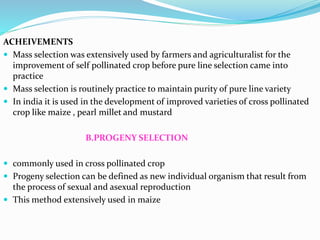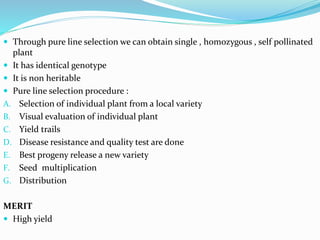This document discusses different methods of plant selection, including natural selection, artificial selection, mass selection, progeny selection, pure line selection, and clonal selection. Natural selection occurs in nature and favors fit organisms that can survive adverse conditions, while artificial selection is done by humans to select better varieties. Mass selection involves choosing plants from a mixed population based on observable traits, while progeny selection evaluates the offspring of selected plants. Pure line selection isolates homozygous plants through self-pollination. Clonal selection propagates desirable clones through asexual reproduction to create stable varieties. Each method has merits like improving yield or disease resistance, as well as demerits like limited genetic variability.














